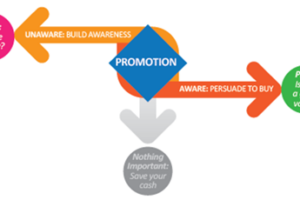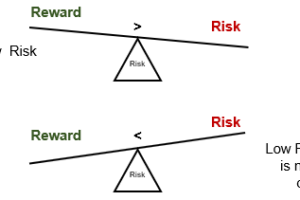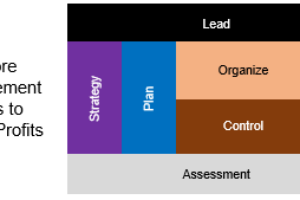
Synopsis
Profit comes in one-word ACTION. Ideas and plans don’t make money. It’s the actions completed that produce money. The Reaction Scale is not just about a person's response to what others say. It projects what they are likely to do after the conversation. Failure to engage others in doing what needs to be done is the number one reason businesses make less money than they should.
New actions are often triggered by dialogue. A focused conversation, engaged intentionally to increase understanding, address problems, and drive new actions. Effective dialogue engages the mind and heart of those participating in the conversation. In contrast, a monologue has only one person speaking to an audience that loses interest the more they are held captive by their lecturer.
Master communicators use the Reaction Scale to stay in dialogue. They are always aware of their attitudes and mindful of the attitude others bring to the conversation. By having attitude awareness for those involved in a conversation, they can better stay in dialogue with them. They stay in dialogue by recognizing changes in attitude during the conversation.
Attitude level changes in any conversation are primarily driven by reality or affinity disconnects. When different views of reality exist in a conversation, there will be difficulty communicating until those in dialogue develop a shared understanding of each other’s reality. High-affinity people on a given topic will exhibit energy in the conversation, while low-affinity people will want the conversation to end.
The Reaction Scale helps you pick up on different realities or affinities in a conversation so you can adjust your dialogue appropriately to stay in the conversation. The following Reaction Scale helps the master communicator assign likely action levels to observable emotions and viewpoints in themselves and those they are talking with, be it employees, customers, suppliers, or any other person they are trying to influence.

The higher people operate on the Reaction Scale, the more likely they are to complete required actions. People who operate in the higher activity levels will have a more positive impact through their communications, decisions, and actions than those operating in the lower reactions. People who are lower on the Reaction Scale are much less productive than those higher on the scale.
When you or others are at Apathy and below, you are either being or interacting with people that are difficult to reason with. When you recognize that you or someone is operating in the lower activity levels, it is essential to recognize that your communications will be more challenging and how you communicate will likely be received negatively. When people are below Neutral on the Reaction Scale, their attitudes to what they are doing will not help your business’s morale or profit performance.
For example, you are Excited about sharing an important action to be taken, and the person you want to engage is Hostile. If you don’t dial down your enthusiasm, your message is not going to be well received. By dialing down your enthusiasm initially, you become more real to them. As they work up the Reaction Scale, you will find them more receptive to your communication as their likely action level follows yours up. This doesn’t mean you start the conversation at Hostile. You open at Interested or Reserved to keep them in dialogue until they become at least Neutral. If you can’t move them up the Reaction Scale, you need to shift your conversation to what’s influencing them to be so low before discussing the action you are excited about them helping to realize.
Remember, it’s not about you conveying what you are excited about doing. It’s about them hearing you, so they understand what you want to enroll them in, so they are a contributor, not a detractor to what you are excited to do.
The Reaction Scale is not just about a person’s response to what others say. It also involves what they are likely to do after the conversation ss reflected below:
5. Passion: Holds strong feelings about their ideas and what they are about. Are purpose-driven. Will strongly advocate for their ideas. May “bulldoze” others in pursuit of their passion.
4. Excited: Exhilarated, alive! Have a natural sense of accountability in all areas of their life. Gains support by creative enthusiasm and vitality backed by reason
3. Engaged: Involved. Good at executing projects. Have a strong interest in people and life. Will adjust the environment to the benefit of others and self.
2. Interested: Capable of a fair amount of action. They are committed to doing what needs to be done but won’t be out front leading the charge.
1. Reserved: Cautious communicator of personal ideas. They like to keep things the way they are, don’t like to change. Not outgoing, probably not good at interacting with customers nor supervising employees.
Neutral: Will do what has been asked of them. Not likely to take the initiative nor complain about what others are doing. They want to be left alone to do their job.
-1. Apathy: Unmotivated. Relatively inactive, though capable of motion. Poor concentration, sometimes work is good, sometimes not.
– 2. Angst: Is easily upset. Has difficulty making themselves understood. Accident-prone. Usually moves slow. Does not talk much, nor are they good listeners—poor command of self, environment, and other persons.
– 3. Fear: Won’t make eye contact easily. They are afraid to be honest about their thoughts and concerns. Not in control, backs off from people. Afraid to make decisions or take responsibility. Personal possessions or space in poor condition.
– 4. Hostile: Quick to invalidate others. Uses threats, will raise their voice to dominate others. Actively stirs up members of a team and then blames someone else. They use sly means for controlling others. They are irresponsible with very poor concentration.
– 5. Angry: Bluntly criticizes to demand compliance with what they want. Aggressive in furthering their interests. Destructive. Will damage tools, equipment, and property by applying too much force. Personal possessions are often broken or in bad repair. Ready for a fight when triggered.
The Rection Scale and the RAD Triangle work together. Click here to learn more about RAD. The more RAD there is within a business, the more likely actions will be completed on time as planned. To appreciate the significance of the likely Rection Scale, consider the following reasons why a customer is most likely to stop doing business with your company:
Customer dies 1%
Moves away 3%
Develops other friendships 5%
Leaves for competitive reasons 9%
Dissatisfied with the product 14%
Perceived indifference by employee(s) towards customer 68%
The first goal for people who get things done is to operate to the best of their abilities. They do this when they live and act in higher scales of the likely Rection Scale. Their second goal is to do everything they possibly can to increase understanding of what’s to be done by when and who. They do this consistently because of their goals and commitment to be personally accountable for results.
Another technique action-oriented leaders use to help those involved in complex tasks is to catch people doing something well. Acknowledgment that is relevant and timely makes people feel better. As people feel better about themselves and their contributions, they will move themselves up the Rection Scale.
The attitudes people have for their work shape the quality of the actions they take. Couple this with the attitude you bring affects the actions of those you are trying to influence. When each attitude is on different ends of the Reaction Scale, you have problems. You reduce this conflict by helping those you need to complete an action complete their actions at the high, never the low end of the Rection Scale.
Would improved communication help you make more money?
If you struggle to hold onto cash or have shrinking profits, take the “free” BusinessCPR™ Assessment to learn how healthy your business is. Click here to take this no-obligation business assessment to diagnose what’s working and what isn’t in your business across ten foundational management measures. Upon completing the business assessment, you will receive a management profile showing how you what areas of your business are suffering cash flow and profit problems.
Are you losing money because of communication problems?
If you struggle to hold onto cash or have shrinking profits, take the “free” BusinessCPR™ Assessment to learn how healthy your business is. Click here to take this no-obligation business assessment to diagnose what's working and what isn't in your business across ten foundational management measures. Upon completing the business assessment, you will receive a management profile showing how you what areas of your business are suffering cash flow and profit problems.
EXPRESS ASSESSMENT

